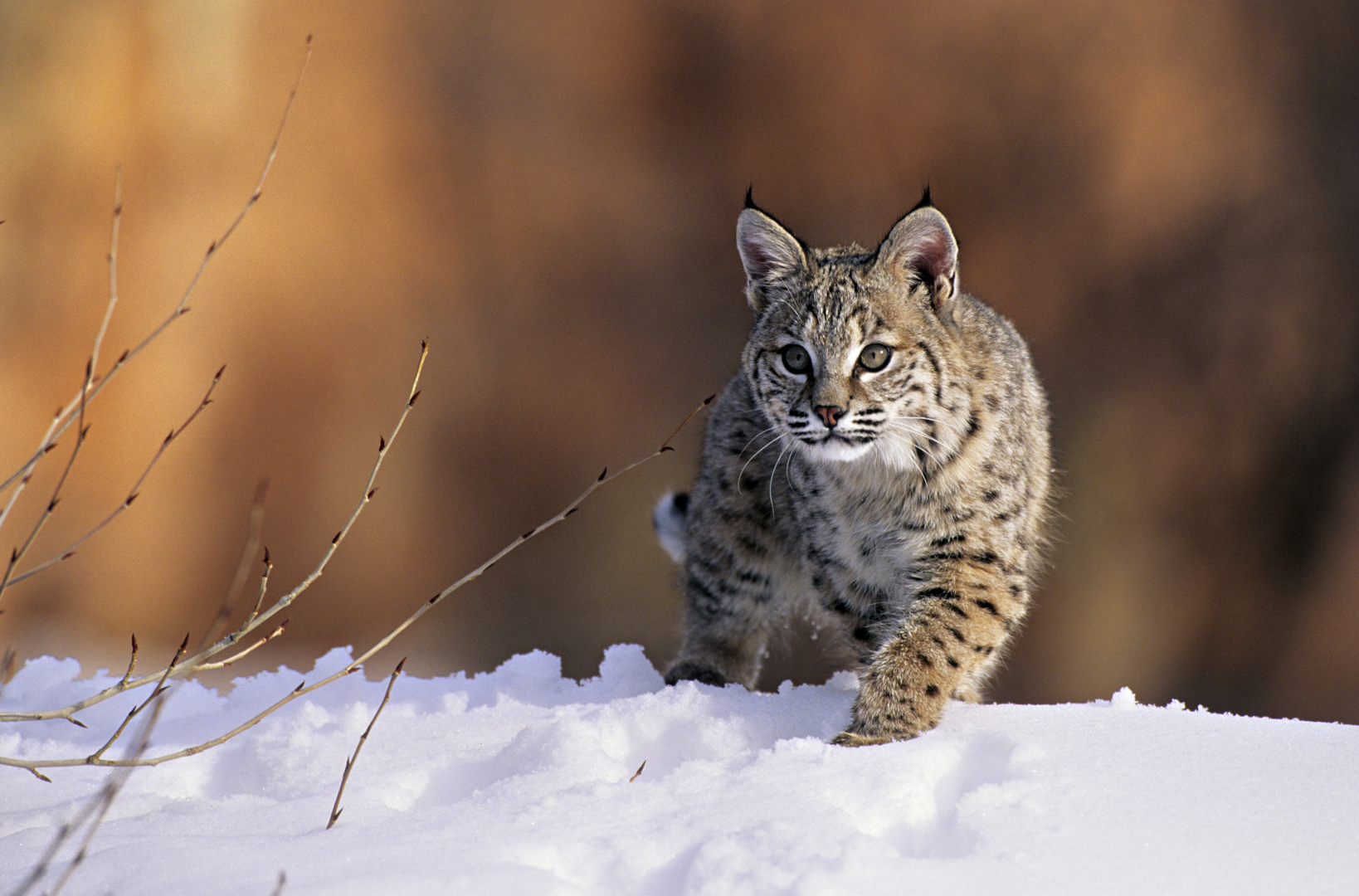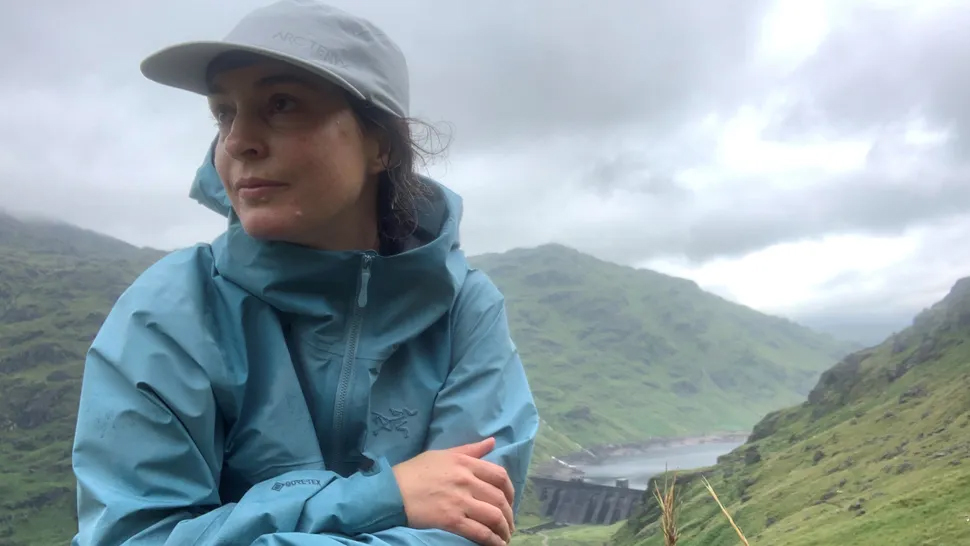What to do if you see a bobcat while hiking: our expert safety guide
We guide you on what to do if you see a bobcat while hiking, while also considering the traits of this elusive creature

Chance encounters with wildlife can be wonderfully exciting. That little kick of adrenaline, coupled with the knowledge that you're watching something very special indeed, is what keeps wildlife enthusiasts coming back to the trail time and time again. Of course, it's important to know what to do when confronted with a wild animal. The bobcat is a big cat that's relatively common across the States, so it's important to know what to do if you see one while out on the trails.
In this feature, our wildlife safety expert details what to do if you see a bobcat while hiking and takes a look at some characteristics of this elusive creature, including how dangerous they actually are.
For more guides on what do do around different animals you might encounter in the backcountry, see our features on how to use bear spray as well as our guides on what to do if you see a mountain lion or snake on the trail.

What to do if you see a bobcat while hiking
In the very unlikely event that you encounter a bobcat on the hiking trail, you should take the following precautions to protect yourself and any children and pets with you:
- Don't approach it – Respect all wildlife by keeping your distance. Remember, you're a guest in their house, not the other way around.
- Don’t turn your back on the bobcat – Keep facing it and back away slowly and deliberately to make space between you.
- Don’t run – We know, this is hard, but it may provoke the bobcat into instinctively pursuing you, just as it would if you met a bear or a mountain lion.
- Start making a lot of noise – Use your voice, bells, bash your camping pots and pans together, beat your hiking pole against a tree, blow the whistle on your backpack – basically whatever you have at your disposal.
- If you have water, throw or spray it at the bobcat – Cats dislike water!
- Notify animal control if you see a bobcat hanging out in a developed neighborhood.
Meet the expert

Julia moved to the US for university and developed a love for the great American outdoors. She enjoy tackling backcountry trails and bagged several Colorado 14ers while she was at it. Now back in her native Scotland, she still keeps a close eye on developments across the Pond.
Today's best deals
Big cats in the US
- There are thought to be 20,000 - 40,000 mountain lions in the US
- Bobcats are much more common, with an estimated 1 million in the US

Big cats are certainly account for some of the most alarming prospects when it comes to potential trail mates, and while there are only thought to be somewhere in the vicinity of 20,000 - 40,000 mountain lions in the US, making a sighting unusual indeed, a far more common variety of big cat is the bobcat. There are thought to be around a million in the US alone. But are bobcats actually dangerous?
What exactly is a bobcat?
- A bobcat is a nocturnal, medium-sized wild cat, also known as a red lynx, that is native to North America
- They're much smaller than a mountain lion, only about double the size of a house cat
- There are thought to be up to one million in the US

A bobcat is a medium sized wild cat, also known as a red lynx, that is native to North America. Bobcats are found in relatively large numbers from southern Canada all the way down to southern Mexico and in most of the United States in between those two points.
All the latest inspiration, tips and guides to help you plan your next Advnture!
Unlike the far larger and scarier mountain lion, bobcats grow up to four feet long, about double the size of an average house cat, and weigh up to 30lbs. In comparison, a North American mountain lion may grow up to almost eight feet long and weigh over 100lbs, making a daunting opponent. Most bobcats are brown or brownish red with a white underbelly, black markings on their legs and a short, stubby black-tipped tail.
Bobcats are nocturnal and as such, even though they exist in large numbers – reportedly up to one million in the US – in habitats as diverse as desert, forests, swamps and suburban areas, it is not common to see them. Bobcats are hunters, and they like to prey on small game like squirrels, mice and birds.
How dangerous is a bobcat?
- Bobcats are shy, elusive animals and are not known to attack humans
- You're unlikely to encounter one on the trail
- Attacks on humans have often been due to the bobcat having rabies
- If they are hungry, they may attack smaller pets

Unlike a mountain lion, which may well decide to stalk you on the admittedly rare occasion you might encounter one, bobcats are shy, elusive animals and are not known to attack humans when they are healthy. Generally speaking, they really do not pose a significant threat to you and you are very unlikely to encounter one on the trail.
Bobcat attacks on humans only tend to happen if the bobcat is protecting nearby cubs or is sick, and many reported bobcat attacks have been found to be due to rabies infection. Bobcats might, however, attack smaller pets if they have been deprived of natural food sources so you should keep your dog on a leash on the trail.
Julia Clarke is a staff writer for Advnture.com and the author of the book Restorative Yoga for Beginners. She loves to explore mountains on foot, bike, skis and belay and then recover on the the yoga mat. Julia graduated with a degree in journalism in 2004 and spent eight years working as a radio presenter in Kansas City, Vermont, Boston and New York City before discovering the joys of the Rocky Mountains. She then detoured west to Colorado and enjoyed 11 years teaching yoga in Vail before returning to her hometown of Glasgow, Scotland in 2020 to focus on family and writing.

